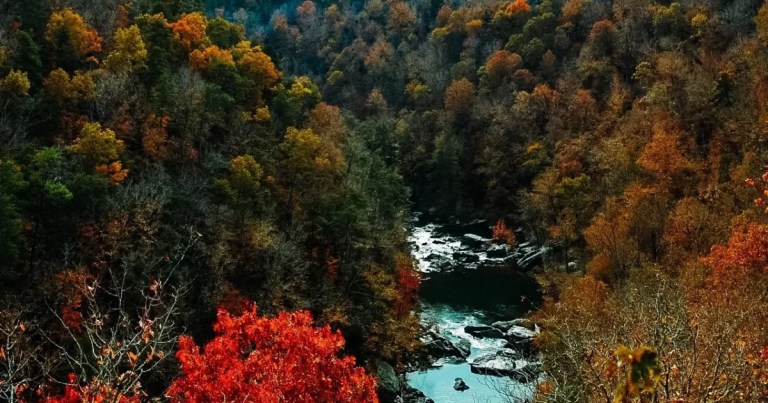Five facts about salamanders in Alabama, plus one fun festival
Reading time: 6 minutes

If you’ve ever lifted up a rock or rotting wood in pretty much any damp, shady spot in Alabama, you may have found a salamander or two.
When it comes to salamanders, there seem to be two distinct camps of people. First, there’s the “OMG salamanders are so cute, I want to hold them!” crowd. Then, there’s the “ewwww, they’re slimy and gross” folks. For the record, I have children who belong to each.

Whichever one best describes you, we’ve got five fun facts about salamanders for you. Plus, there’s a festival you can go to this coming weekend if you want to get up close and personal (assuming you like salamanders) and their predators (if they’re not your thing).
1. Salamanders make up a huge part of the biomass in Alabama
Here’s one way to picture this: if you were to take all the salamanders in the Birmingham area and weigh them, then compare that weight to the weight of all other creatures around here, salamanders would win, hands down.

What this means is that they play a really big part in the food chain. Basically, they eat lots of critters most of us would rather not think about, like ants and termites. By doing that, they turn themselves into a nice, juicy protein-filled snack for their predators, like hawks and owls. And so it goes . . .

2. Salamanders in Alabama include at least 43 different types
Here in Alabama, we’ve got slimy salamanders, Webster’s salamanders and Red Hill salamanders. In addition, we’ve got spotted salamanders, reticulated salamanders (which just happen to be one of the biggest amphibians in the world), Alabama mudpuppies, plus a whole lot more.

Some live in the water. Some live on the land. Some live in both, depending on the stage of their life cycle.

3. Spotted salamanders in Alabama are like the night-blooming cereus—they only come out once a year, at night

According to Friends of Shades Creek, organizers of the annual Salamander Festival in West Homewood, “Spotted salamanders come out only once a year, on a warm rainy night. The rest of the year, they live in the ground in burrows. They live in a rich forest habitat most of their lives, but need a wetland pool to mate and breed in.”

That one night a year when they do come out is, unfortunately, often hazardous to their health. Salamanders are kind of like sea turtles, who are vulnerable to predators when they come out of the water to lay their eggs on land. Except they have the opposite issue. They come out from underground and—now—often have to cross roads to get to the water they need to lay their eggs.
To help them cross the road safely, groups like Friends of Shades Creek in Homewood (and other similar groups around the country) call on volunteers to come out to help ensure safe passage.
You can learn more about Shades Creek’s spotted salamanders in this cool little video from Assignment Earth. Afterwards, if you’re like me, you’re going to want to go check out Homewood Forest Preserve.
4. Salamanders in Alabama—and around the world—can live a really long time and they don’t get worse with age

My research turned up tales of a 200-year old Chinese Salamander, 70-year old cave-dwelling salamanders, and others that live up to 55 years. That’s a long time. And, according to one of our resident salamander enthusiasts here at Bham Now, “There are special cells in their bodies called ‘macrophages’ that basically consume any old cells. This is (at least partially) why they’re able to regenerate tails and limbs.”
In fact, scientists are studying salamanders to see what secrets they might hold to long life and healthy aging for humans.
5. Move over Aubie and Big Al, Alabama’s got a state amphibian: the Red Hills Salamander

The Red Hills Salamander was named Alabama’s official state amphibian (bet you didn’t know we had one) by the Alabama State Legislature. And, according to the Alabama Department of Conservation and Natural Resources, it’s “listed as threatened by the U.S. Fish and Wildlife Service, with the highest conservation concern.”
While this critter—which can grow up to 10 inches long, most of that tail—is threatened nationally, since it only lives in a very small part of Alabama, it’s actually quite abundant in some of the places where it lives. You won’t find it near Birmingham, though—just down in a small section near the Florida panhandle.
Make plans to head to the 2019 Salamander Festival in Homewood to learn more about salamanders in Alabama

Mark your calendar now for next Saturday afternoon, January 26, and make plans to head over to the Homewood Senior Center next to Patriot Park for an afternoon of hiking, learning, crafts, music, and more. The fun begins with a 2 pm guided nature hike that starts outside the Senior Center. Inside, festivities go from 3-5:30PM. All events are free and open to all ages.
According to Friends of Shades Creek, “The festival will feature live Salamanders, displays with Fish, Frogs, Turtles, Crayfish, free Arts & crafts, Fossils, Microscopes, Recycling, Fishing, Southern trees, Carnivorous plants, and much more.”
Now that you’ve learned a few fun facts about salamanders, head on over to the Homewood Senior Center next Saturday for the 2019 Salamander Festival. If you like holding them, you’ll get the chance. If you, erm, rather not, thank you, you can check out the owls, hawks, turtles, or other things on display. Either way, you’re sure to come away with a newfound appreciation of these seldom-seen creatures that make up such a big part of our world.
Finally, we’d love to hear from you, Birmingham: what are your favorite facts about salamanders? Tell us in the comments—we can’t wait to learn what you know.


![How these dogs bring healing smiles to Birmingham [PHOTOS] How these dogs bring healing smiles to Birmingham [PHOTOS]](https://wp.fifu.app/bhamnow.com/aHR0cHM6Ly9iaGFtbm93LmNvbS93cC1jb250ZW50L3VwbG9hZHMvMjAyNS8xMS9oYW5kaW5wYXctNi1zY2FsZWQuanBn/6bd6ebc3842a/how-these-dogs-bring-smiles-to-birmingham.webp?w=768&h=0&c=0&p=1566179)
